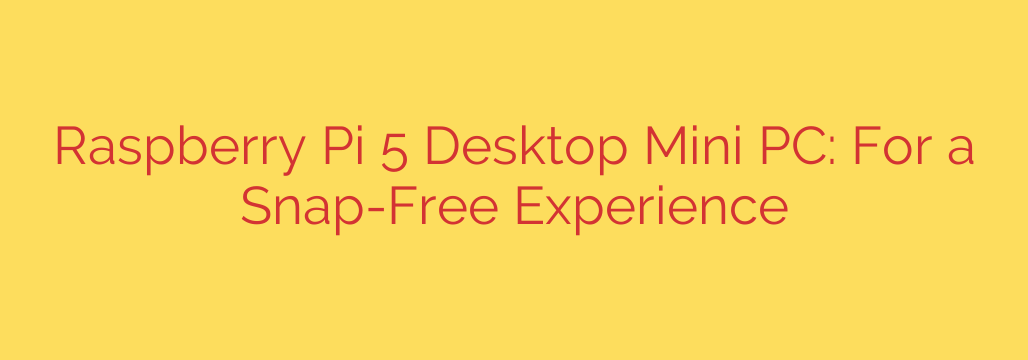
The Raspberry Pi 5 is making waves not just as a tinkering platform but as a surprisingly capable desktop contender. Moving beyond its hobbyist roots, this latest iteration delivers a level of performance that seriously challenges its predecessors, making it a more viable machine for everyday computing tasks.
One of the key aspects highlighted for a smooth user experience is the software environment. Unlike some other Linux distributions which heavily rely on containerized applications like snaps, the default Raspberry Pi OS provides a largely snap-free system out of the box. This approach is often preferred by users seeking a more traditional Linux feel and can contribute to potentially faster boot times and resource utilization compared to systems bogged down by numerous snap packages.
While it’s not going to replace a high-end gaming rig or a powerful workstation, the Raspberry Pi 5 is demonstrating impressive prowess for tasks like web browsing with multiple tabs, working with office suites, light programming, and media consumption. The significant upgrades in processor, graphics, and I/O make multitasking much more fluid.
The vision is clear: provide an affordable, compact computer that can serve as a primary machine for users with modest needs, offering a clean, responsive software environment. The snap-free nature of the default operating system is seen as a crucial factor in achieving this goal, allowing the limited but improved resources of the Raspberry Pi 5 to be utilized efficiently for the user’s desired applications and tasks, rather than being consumed by background software complexities. This makes the Raspberry Pi 5 a compelling option for anyone seeking a capable, low-cost desktop with a streamlined Linux experience.
Source: https://www.linuxlinks.com/raspberry-pi5-desktop-mini-pc-avoid-snap-pollution/








